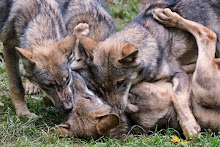Každý popis je jen chudým odrazem krásy, kterou vnímáme zrakem. Jen ti nejlepší spisovatelé dokážou i slovy kouzlit tak, že nám krajina ožívá před očima.
http://www.sparkyourself.org/blog/grapes-of-wrath-writing-exercise
http://anglistika.webnode.cz/products/steinbeck-john-the-grapes-of-wrath-/
http://en.wikipedia.org/wiki/Northwestern_Oklahoma
http://www.library.cornell.edu/Reps/DOCS/landrush.htm
John Steinbeck – The Grapes of
Wrath (1939)
TO THE RED COUNTRY
and part of the gray country of Oklahoma, the last rains came gently, and they
did not cut the scarred earth. The plows crossed and recrossed the rivulet
marks. The last rains lifted the corn quickly and scattered weed colonies and
grass along the sides of the roads so that the gray country and the dark red
country began to disappear under a green cover. In the last part of May the sky
grew pale and the clouds that had hung in high puffs for so long in the spring
were dissipated. The sun flared down on the growing corn day after day until a
line of brown spread along the edge of each green bayonet. The clouds appeared,
and went away, and in a while they did not try any more. The weeds grew darker
green to protect themselves, and they did not spread any more. The surface of
the earth crusted, a thin hard crust, and as the sky became pale, so the earth
became pale, pink in the red country and white in the gray country.
In the water-cut gullies the earth dusted
down in dry little streams. Gophers and ant lions started small avalanches. And
as the sharp sun struck day after day, the leaves of the young corn became less
stiff and erect; they bent in a curve at first, and then, as the central ribs
of strength grew weak, each leaf tilted downward. Then it was June, and the sun
shone more fiercely. The brown lines on the corn leaves widened and moved in on
the central ribs. The weeds frayed and edged back toward their roots. The air
was thin and the sky more pale; and every day the earth paled.
In the roads
where the teams moved, where the wheels milled the ground and the hooves of the
horses beat the ground, the dirt crust broke and the dust formed. Every moving
thing lifted the dust into the air: a walking man lifted a thin layer as high
as his waist, and a wagon lifted the dust as high as the fence tops, and an
automobile boiled a cloud behind it. The dust was long in settling back again.
When June was
half gone, the big clouds moved up out of Texas and the Gulf, high heavy clouds,
rainheads. The men in the fields looked up at the clouds and sniffed at them
and held wet fingers up to sense the wind. And the horses were nervous while
the clouds were up. The rainheads dropped a little spattering and hurried on to
some other country. Behind them the sky was pale again and the sun flared. In
the dust there were drop craters where the rain had fallen, and there were clean
splashes on the corn, and that was all.
A gentle wind
followed the rain clouds, driving them on northward, a wind that softly clashed
the drying corn. A day went by and the wind increased, steady, unbroken by
gusts. The dust from the roads fluffed up and spread out and fell on the weeds
beside the fields, and fell into the fields a little way. Now the wind grew
strong and hard and it worked at the rain crust in the corn fields. Little by
little the sky was darkened by the mixing dust, and the wind felt over the
earth, loosened the dust, and carried it away. The wind grew stronger. The rain
crust broke and the dust lifted up out of the fields and drove gray plumes into
the air like sluggish smoke. The corn threshed the wind and made a dry, rushing
sound. The finest dust did not settle back to earth now, but disappeared into
the darkening sky.

